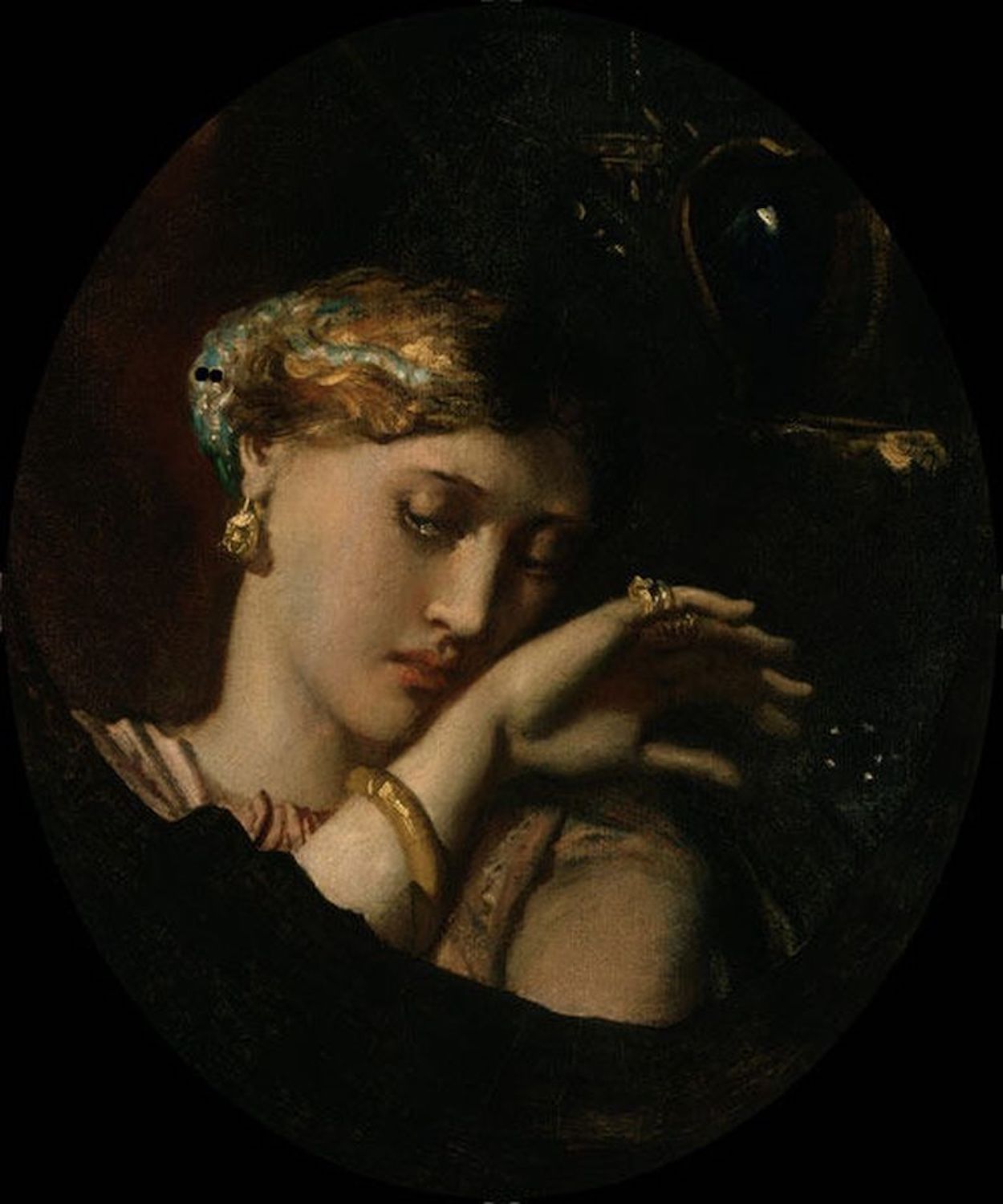Théodore Chassériau (1819-1856) was a prominent painter of the nineteenth century. He was the student of Ingres, who called him the “Napoléon of painting.” He is mostly famous for his mythological and religious scenes as well as for his orientalist images in the style of Delacroix, inspired by his trip to Algeria. In search of fame and recognition, Chassériau participated at his first Salon when he was barely 17 years old.
The Servant of Cleopatra is a painting from 1845. It was a part of a bigger composition called The Death of Cleopatra. This painting was refused by the Salon of the same year, which brought Chassériau to destroy part of the painting but fortunately this detail of the servant remained. This fragment highlights the role of the servant in this tragedy when usually the focus is only on Cleopatra. Chassériau was close to the world of theater, and we can see such an influence in the gesture of the servant. The way she is putting her hand close to her mouth in a sign of sadness or fright is typical of Romanticism, which was adopted by Chassériau in his late period.
Please note also the nascent tear in the eye of the woman that is a proof of the artist's talent. Théophile Gautier praised this artwork and described it as “a fresco taken from the walls of Pompeii.” The whole painting was inspired by William Shakespeare’s Antony and Cleopatra.
- Tony Goupil


.jpg) Théodore Chassériau
Théodore Chassériau